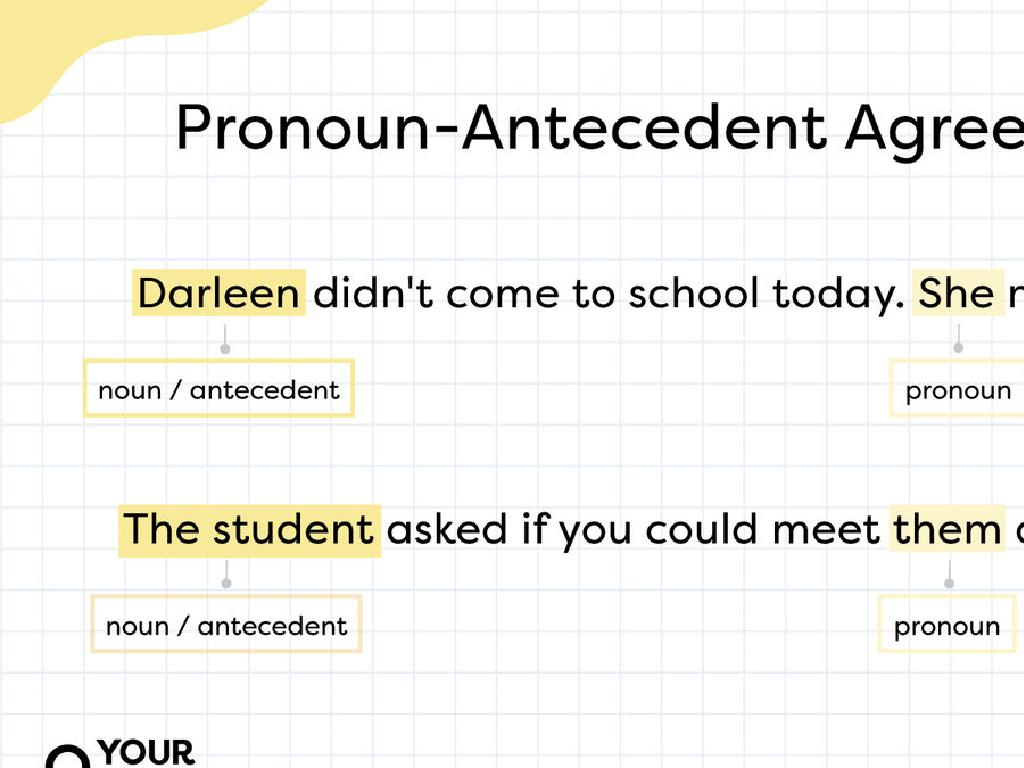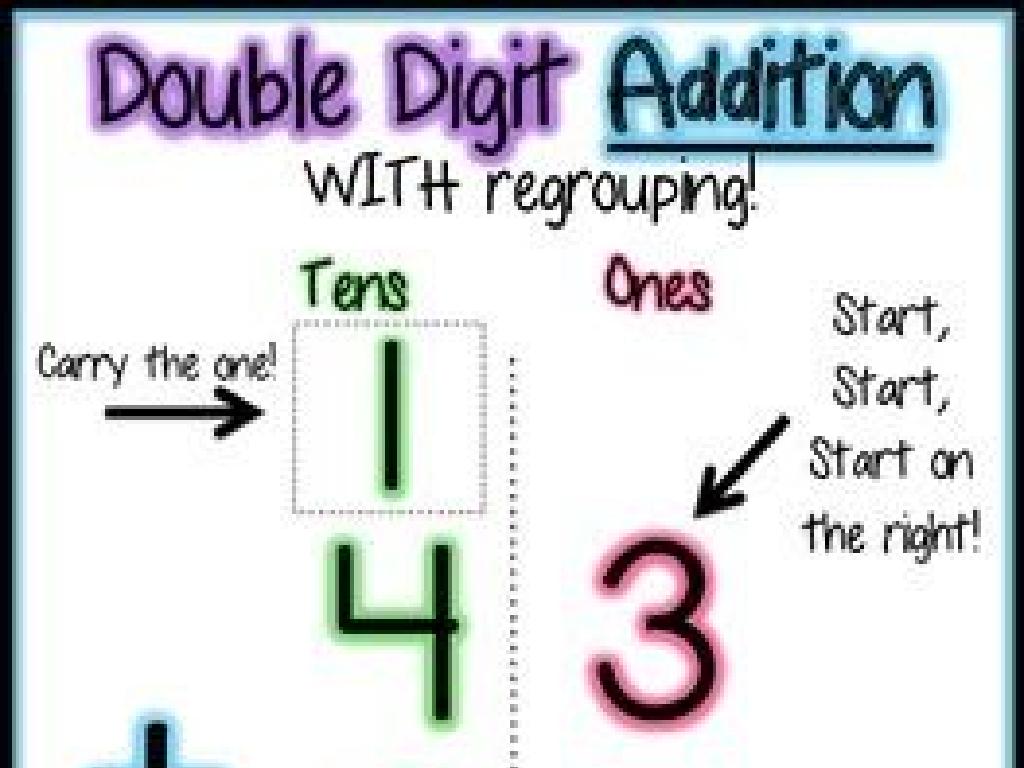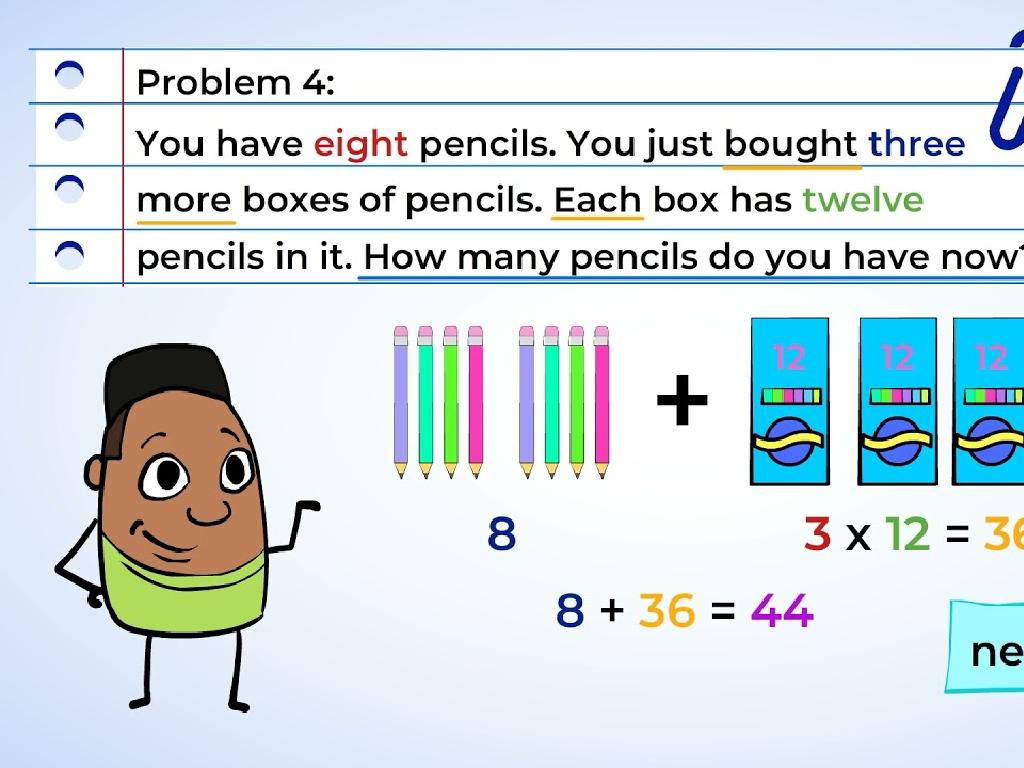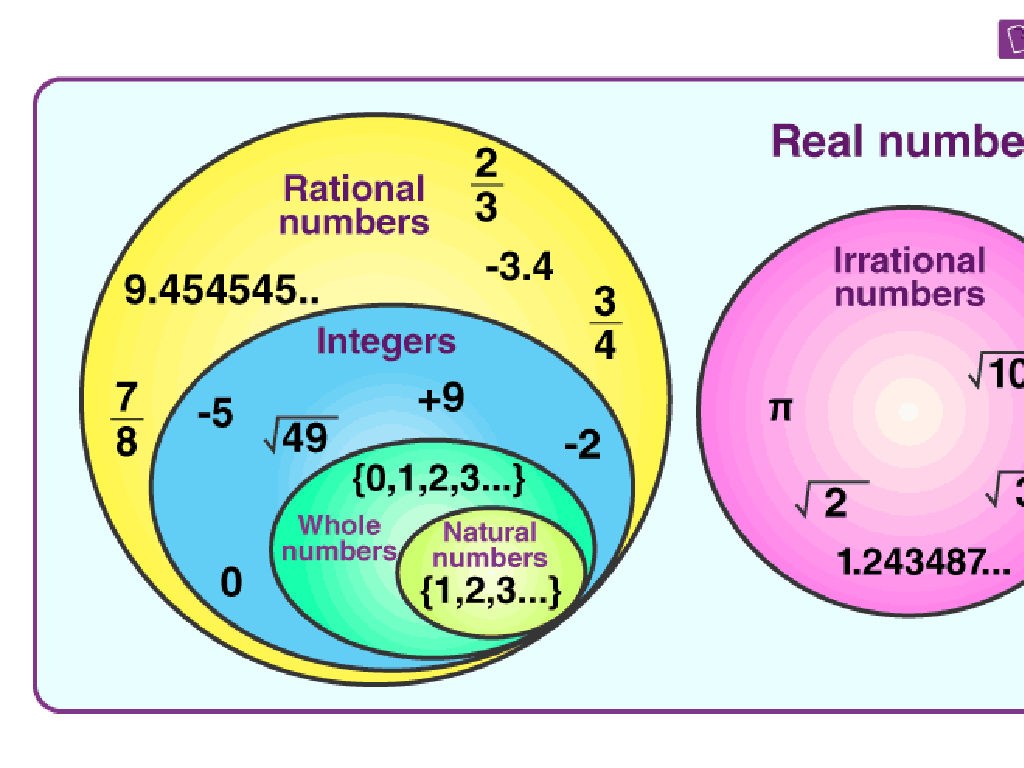Add Multiples Of Ten
Subject: Math
Grade: First grade
Topic: Addition And Subtraction: Multiples Of Ten
Please LOG IN to download the presentation. Access is available to registered users only.
View More Content
Welcome to Addition: Multiples of Ten!
– Learn to add multiples of ten
– Numbers like 10, 20, 30
– These are numbers that end in zero
– It’s fun and easy!
– Practice with examples
– Example: 10 + 20 = 30
|
This slide introduces first graders to the concept of adding multiples of ten. Emphasize that multiples of ten are simply numbers that end in zero and are some of the easiest numbers to add. Use visual aids like number lines or groups of ten objects to help students visualize the concept. Encourage them by saying it’s fun and easy, and provide simple examples they can relate to, such as adding groups of ten apples. During the lesson, have students practice with hands-on activities, such as using manipulatives or interactive whiteboard exercises, to reinforce their understanding. Prepare to guide them through several examples and ensure they grasp the concept of adding tens together.
Understanding Multiples of Ten
– What are multiples of ten?
– Numbers like 10, 20, 30, etc.
– Multiples of ten as building blocks
– They help us organize numbers neatly
– Each multiple is ten more
– 20 is 10 more than 10, 30 is 10 more than 20
– Counting by tens
– Practice: 10, 20, 30, can you continue?
|
This slide introduces the concept of multiples of ten to first graders. Multiples of ten are the cornerstone of our base-ten number system and are essential for understanding place value and arithmetic. Emphasize that each subsequent multiple of ten adds another ten to the previous number, making it easy to count and calculate larger numbers. Encourage students to practice counting by tens to reinforce the concept and to prepare them for addition and subtraction involving multiples of ten. Use visual aids like counting blocks or a number line to help students visualize the increments of ten.
Adding Multiples of Ten
– Adding groups of ten together
– Example: 10 + 20
– 10 (one group of ten) + 20 (two groups of ten)
– Like combining ten groups
– Imagine 1 bundle of ten sticks and 2 bundles of ten sticks
– Practice with different numbers
– Try 30 + 40, or 50 + 20 to see the pattern
|
This slide introduces the concept of adding multiples of ten by visualizing them as groups or bundles. Start by explaining that each number ending in zero represents a group of ten. Use physical objects like sticks or blocks to demonstrate this concept if possible. Show that adding 10 (one group of ten) to 20 (two groups of ten) is like combining all the groups together to make three groups of ten, which equals 30. Encourage the students to practice with different multiples of ten to become comfortable with the pattern and reinforce the concept that the ones place stays the same when adding tens.
Let’s Practice Adding Tens!
– Start with an example: 30 + 40
– How many tens in total?
– Combine two groups of tens to find the total
– Count by tens to solve
– 30, 40, 50, 60, 70 shows adding 10 each time
– Practice with different numbers
– Try 20 + 30, or 50 + 60 for more practice
|
This slide is aimed at helping first graders understand the concept of adding multiples of ten. Start by presenting the example 30 + 40. Ask the students how many tens are in each number and then how many tens they have in total. Guide them to count by tens starting from 30 to reach 70, reinforcing the concept that adding tens is like counting up. Encourage the students to practice with different numbers, such as 20 + 30 or 50 + 60, to solidify their understanding. Make sure to provide manipulatives like counting blocks or visual aids to help them visualize the addition of tens.
Adding Multiples of Ten Using a Number Line
– Number lines simplify addition
– Example: Adding 20 + 30
– Visualize 20 on the line, then add 30
– Start at 20, jump forward 3 tens
– Each jump represents adding ten
– Land on 50, the sum of 20 + 30
|
This slide introduces first graders to the concept of using a number line to add multiples of ten. It’s a visual and interactive way to understand addition. Start by explaining what a number line is and how it can be used as a tool for addition. Show them the example of 20 + 30, and demonstrate on the number line by starting at 20 and making three big jumps forward, each representing an addition of ten. Emphasize that each jump is a multiple of ten, and when we land on 50, that’s the sum of 20 and 30. Encourage students to practice with different multiples of ten to reinforce the concept.
Hands-On Activity: Building with Tens
– Try adding 10 + 20 with blocks
– Use blocks to stack 10 and then 20
– Draw to show 10 + 20
– Draw two sets: one of 10 items, another of 20
– Share your answer with the class
– Explain how you got the answer to your friends
|
This slide is for a hands-on class activity where students will learn to add multiples of ten using a tactile approach. Provide students with blocks or drawing materials. Guide them to first create a set of 10 blocks or items, then a set of 20, and finally combine them to see what they get. Encourage them to count all the blocks or items together to find the total. For the drawing activity, they should represent the numbers 10 and 20 with different items and then add them together visually. After completing the task, each student will share their method and result with the class, fostering a collaborative learning environment. Possible variations of the activity could include using different objects or numbers, working in pairs, or creating a poster of their findings.
Class Activity: Ten-Tastic Game
– Let’s play the Ten-Tastic Game
– Roll the dice to move forward
– If you roll a 4, move 40 spaces
– Each roll adds tens to your score
– Adding multiples of 10 like 10, 20, 30…
– First to 100 is the winner!
|
This activity is designed to help first graders practice adding multiples of ten in a fun and interactive way. Set up a game board with spaces numbered from 0 to 100 in increments of 10. Each student will take turns rolling a dice. If a student rolls a 3, they move 30 spaces, as 3 tens are 30. This reinforces the concept of counting by tens and helps with quick mental addition. The first student to land exactly on 100 wins the game. Make sure to have multiple game boards ready for small groups to play simultaneously. Encourage students to help each other and ensure fair play. Possible variations of the game could include using two dice to add larger multiples of ten, or introducing ‘challenge’ spaces where students have to solve a quick addition problem involving tens to move forward.
Congratulations on Adding Multiples of Ten!
– Celebrate learning addition with tens
– Adding tens is like counting by tens
– Just like 10, 20, 30, it’s easy!
– Practice makes perfect
– The more you practice, the better you’ll get!
– Aim to be a master of multiples of ten
|
This slide is meant to wrap up the lesson on adding multiples of ten. It’s important to reinforce the concept that adding multiples of ten is a simple extension of counting by tens, which they are likely already familiar with. Encourage the students to keep practicing these types of addition problems to increase their speed and confidence. You can suggest fun activities like hopscotch or using number lines to help them practice in a playful way. Remind them that mastery comes with practice and that they are well on their way to becoming experts in adding multiples of ten.






